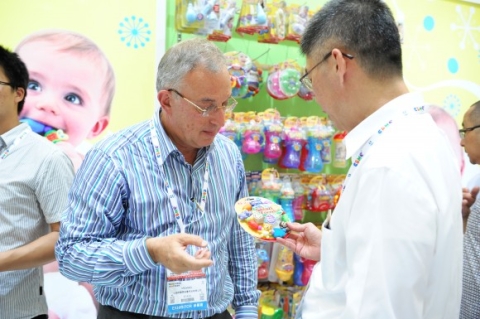Center for Exhibition Industry Research Releases Report on How Attendees Want to Interact on Showfloor

When attendees take the time, expense and energy to spend a few days on a showfloor, they definitely want to make it worth their while.
With that in mind, the Center for Exhibition Industry Research released its latest report - Exhibition Floor Interaction: What Attendees Want – that takes a look at how attendees want to engage on the showfloor.
It’s no surprise that the top two answers on the survey when attendees were asked how they wanted to interact on a showfloor were through product demos (58.9 percent) or by having hands-on interaction with the products (58 percent).
The second way they want to interact is to have the ability to take away information to digest later (57.8 percent).
In-booth brochures are one way, but more and more exhibitors are using getting tech-savvy (and environmentally friendly) with their takeaways, such as USB drives, downloadable brochures through QR codes and apps.
The third way that attendees want to interact on the showfloor is directly with the exhibit staff, but on their own terms.
More than half of the respondents said they preferred to “walk through and observe without speaking to the vendors, unless I approach them”, while just less than half said they wanted to talk to/share with vendors they didn’t already know and 45.8 percent said they wanted to talk with new vendors.
"When professionals attend an exhibition, they want to jump in and immerse themselves with the products and services showcased at the event," says CEIR President and CEO Brian Casey, CEM.
He added, "Interaction trumps theater-style presentations today, as attendees want hands-on experience with products. When they have a question or want to learn more, they expect to engage with knowledgeable exhibitor staff."
Here are some important tips for exhibiton organizers and exhibitors to consider:
Exhibition Organizers
• To satisfy attendees’ appetites for product interaction opportunities, consider offering product focus areas, hubs or other mechanisms where attendees can interact with products in the hottest categories.
• To assist exhibitors in attracting target attendees to their booths, offer a robust, exhibitor marketing program that enables exhibitors to extend personalized, rather than generic, invitations to their target prospects. Enable exhibitors to send a set number of complimentary invitations.
• To help exhibitors maximize their success from exhibiting, offer an event-sponsored exhibitor training program, which provides an overview on effective pre-event marketing, best practice approaches in product demonstrations and product interaction techniques and exhibit booth staff training on engaging effectively with attendees.
Exhibitors
• Attendees come to an exhibition for the real-time, physical experience offered at an exhibition. It is essential to have core products in a booth, with chances to experience a demonstration or chance to interact with them.
• Where a product cannot be showcased physically in a booth, gamification or simulation approaches may offer fun ways to engage attendees while educating them on key features and benefits. Interaction beats theater-style presentation.
• Effective, product-information sharing practices are essential to assure attendees have the information to refer to and review more thoroughly at a later time.
• To maximize exhibiting success, exhibit booth staff need to have the right skills. Published CEIR researchiii indicates staff are needed with deep product knowledge, sharp listening skills and an ability to deftly answer attendee questions ‘on the spot,’ providing information that goes beyond what is available online.
The rest of the report examined what types of exhibit staff the attendees preferred to interact with, including age, decision role and job title.
For the most part, attendees are more comfortable engaging with vendors they already know, though many also reach out to those they are unfamiliar with, ‘Deciders’ in particular.
This study was conducted by Dr. Jeff Tanner, professor of Marketing at Baylor University and director of Baylor’s Business Collaboratory, and Nancy Drapeau, PRC research director of CEIR using a panel of exhibition attendees provided by ResearchNow and with a grant from the CEIR Foundation.
The sample consisted of 421 respondents from 14 industries. Click here to access the report. IAEE members can access the CEIR library and reports at no cost.


Add new comment